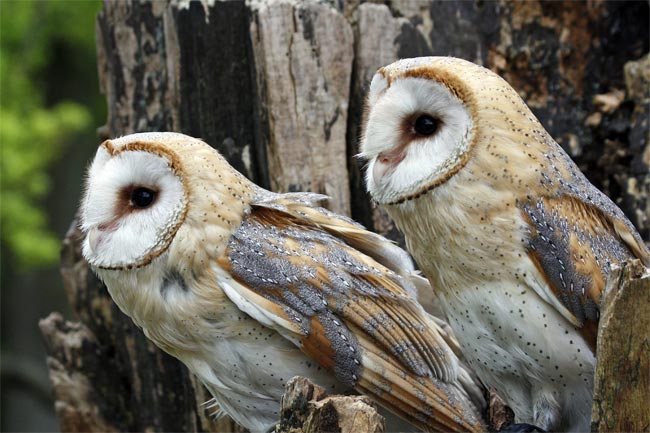What Male Owls Want: Big Spots

"What nice spots you have" could apparently be a barn owl pickup line. A new study found that female barn owls with larger spots seem to up their sexy quotient, and have greater success in mating.
Perplexingly, the same trait — large dark spots on the tips of the white feathers covering the owl's body — appears to hurt male barn owls' reproductive success. [Image of owl sporting spots]
In the new study, researchers followed barn owls over several molting periods and measured any changes in their successive coats. They found that adult females bred earlier in the season and laid larger eggs when their new coats became scattered with larger spots. In contrast, males with this trait fared less well.
"The key story is that there is sexually antagonistic selection — females are selected in one direction, and males in another direction," said Alexandre Roulin of the University of Lausanne in Switzerland, co-author of the new study. An example of sexually antagonistic selection in humans, he said, is the hip bone. In females, larger hips are selected for because they aid in childbirth, while in males, larger hips are selected against because they hinder the ability to run fast.
However, for owls, it's less clear what adaptive function dark spots would have.
Whatever the reason, on female owls, larger spots definitely attract the boys. In a related study, the researchers found that when male barn owls were mated with females whose spots had been removed, they reduced their sperm investment, and chicks from such pairings didn't fare as well.
But why are spots so attractive on a female?
Sign up for the Live Science daily newsletter now
Get the world’s most fascinating discoveries delivered straight to your inbox.
"My guess is that the size of the spots signals gene quality," Roulin told LiveScience.
The dark coloring of the spots is caused by the pigment melanin. Whatever gene or genes in barn owls that are responsible for the production of melanin may have other biological functions that are somehow beneficial in females, Roulin said. And this same gene may be somehow harmful in males.
But it's too early to know which genes may be involved, and to figure out why they have these puzzling effects.
"Now we would like to understand why we find this result, because it seems very strange — females with spots do better and males do less well," Roulin said. "My impression is we came to a system where there are really great things to discover."
Roulin and Lausanne colleague Amelie Dreiss reported their findings in the November 2010 issue of the Biological Journal of the Linnean Society.











